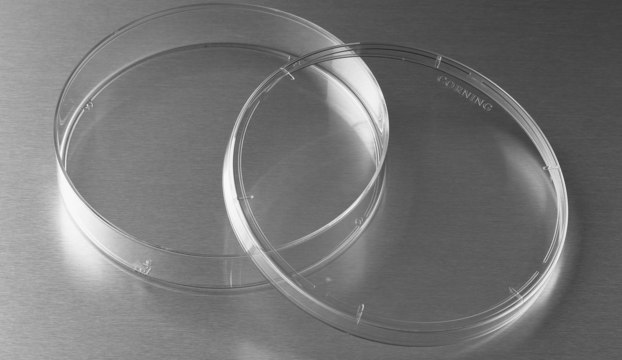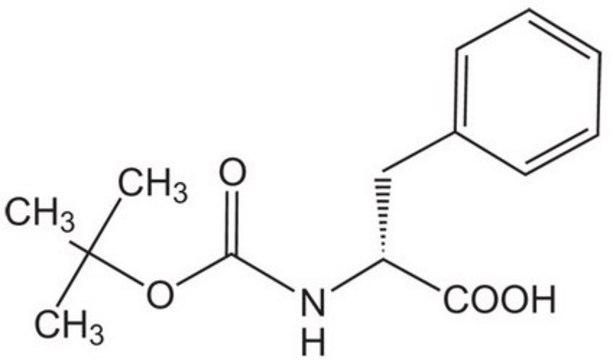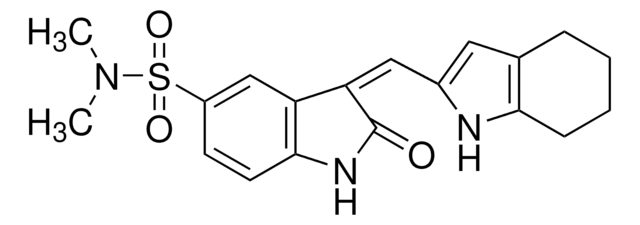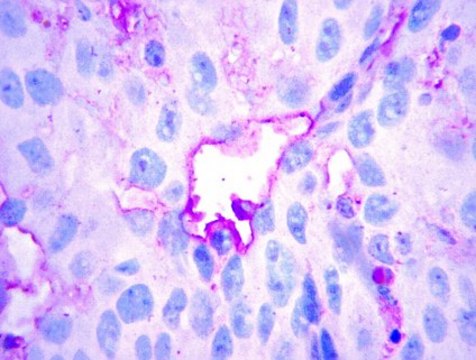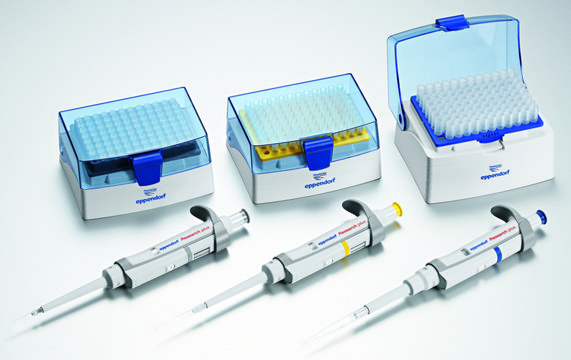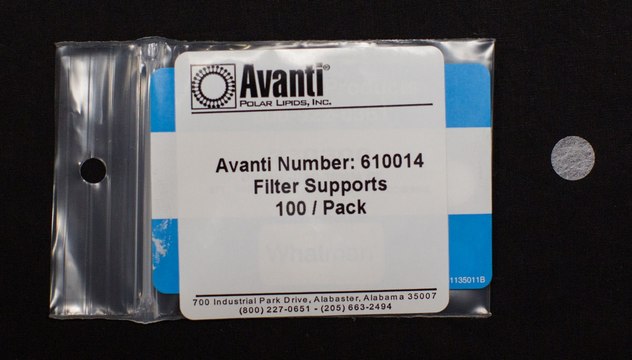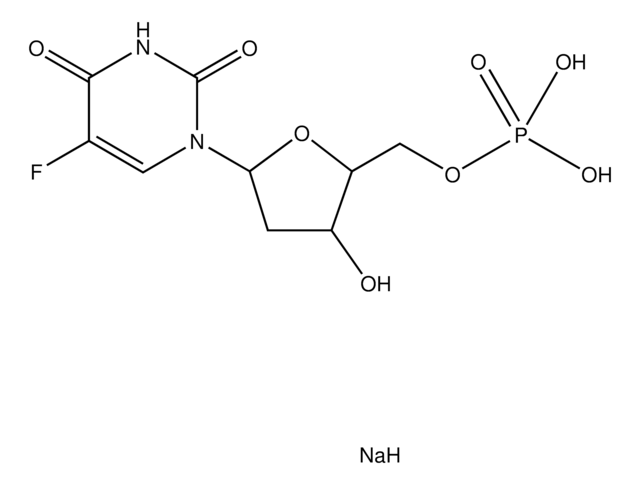MAB3757
Anti-VEGF Receptor-3 Antibody, extracellular domain, clone 9D9F9
ascites fluid, clone 9D9F9, Chemicon®
Sign Into View Organizational & Contract Pricing
All Photos(1)
Synonym(s):
VEGFR3, VEGFR-3, Receptor tyrosine Kinase VEGFR-3
UNSPSC Code:
12352203
eCl@ss:
32160702
NACRES:
NA.41
Recommended Products
biological source
mouse
antibody form
ascites fluid
antibody product type
primary antibodies
clone
9D9F9, monoclonal
species reactivity
human
manufacturer/tradename
Chemicon®
technique(s)
flow cytometry: suitable
immunofluorescence: suitable
immunohistochemistry: suitable (paraffin)
immunoprecipitation (IP): suitable
western blot: suitable
isotype
IgG1
NCBI accession no.
UniProt accession no.
shipped in
wet ice
target post-translational modification
unmodified
Gene Information
human ... VEGFA(7422)
General description
Vascular endothelial growth factor receptor-3 (VEGFR-3) and its ligands, vascular endothelial growth factor-C (VEGF-C) and -D (VEGF-D), are the major molecules involved in developmental and pathological lymphangiogenesis. {Bando, 2004}. Jussila et al reported that VEGFR3 antibodies specifically stain endothelial cells of lymphatic vessels and vessels around tumonrs such as lymphoma and in situ breast carcinoma. {Jussila, 1998}.Interestingly, the spindle cells of several cutaneous nodular AIDS-associated Kaposi′s sarcomas and the endothelium around the nodules were also VEGFR-3 positive. The first specific molecular marker for the lymphatic endothelium should provide a useful tool for the analysis of lymphatic vessels in malignant tumors and their metastases and the cellular origin and differentiation of Kaposi′s sarcomas. {Jussila, 1998}.
Specificity
Specific for human VEGFR-3. Western blot and ELISA demonstrate that the antibody is highly specific for VEGFR-3 with no cross-reactivity with human VEGFR-1 or VEGFR-2 protein {Bando, 2004}. Cross reactivity with other species VEGFR-3 proteins untested.
Immunogen
Recombinantly produced, purified, hVEGFR-3 extracellular domain protein from baculovirus culture {Jussila, 1998}.
Application
Anti-VEGF Receptor-3 Antibody, extracellular domain, clone 9D9F9 is an antibody against VEGF Receptor-3 for use in FC, IF, IH(P), IP & WB.
Immunohistochemistry: frozen cryosections, 5μm cryosections were air-dried and fixed in cold acetone for 10 minutes. Blocked with 5% normal horse serum and then incubated with 9D9 for 2 hours at room temperature in a humid chamber. Typical dilutions will range from 1:100-1:1000 depending upon lot titer. Detection is with enhanced methods (ABC or poly HRP) and enzymatic substrates for best results.
Immunohistochemistry in paraffin: 5μm thick lightly fixed formalin tissues were processed through decreasing ethanol concentrations, washed with water, then heated in a microwave in 10mM sodium citrate pH 6.0 at 780W for 5 minutes, followed by 450W for 10 minutes. The sections were then incubated in methanol containing 30% hydrogen peroxide for 30 minutes and processed further like the cryosections. {Jussila, 1998}.
Western Blot: antibody recognizes VEGFR-3 on reduced samples of HUVEC and HDMEC cells {primay human umbilical vein endothelial cells & primary human dermal microvascular endothelial cells}. The bands seen at molecular weight 195kDa and 125kDa represent the uncleaved and proteolytically cleaved forms of VEGFR3. The band at 175kDa is considered to be intracellular, unglycosylated precursor {Bando, 2004}.
Immunoprecipitation: 1-5μL per 300-500μL of cell lysate. Use protein A or rabbit anti-mouse IgG capture for best results.
ELISA: 9D9F9 has been used as the detection antibody for a VEGFR-3 ELISA {Bando, 2004}.
Flow Cytometry: reactive on transfected NIH-3T3 cells expressing hVEGFR3, Other cell lines untested. {Jussila, 1998}.
Optimal dilutions will need to be determined by the enduser.
Immunohistochemistry in paraffin: 5μm thick lightly fixed formalin tissues were processed through decreasing ethanol concentrations, washed with water, then heated in a microwave in 10mM sodium citrate pH 6.0 at 780W for 5 minutes, followed by 450W for 10 minutes. The sections were then incubated in methanol containing 30% hydrogen peroxide for 30 minutes and processed further like the cryosections. {Jussila, 1998}.
Western Blot: antibody recognizes VEGFR-3 on reduced samples of HUVEC and HDMEC cells {primay human umbilical vein endothelial cells & primary human dermal microvascular endothelial cells}. The bands seen at molecular weight 195kDa and 125kDa represent the uncleaved and proteolytically cleaved forms of VEGFR3. The band at 175kDa is considered to be intracellular, unglycosylated precursor {Bando, 2004}.
Immunoprecipitation: 1-5μL per 300-500μL of cell lysate. Use protein A or rabbit anti-mouse IgG capture for best results.
ELISA: 9D9F9 has been used as the detection antibody for a VEGFR-3 ELISA {Bando, 2004}.
Flow Cytometry: reactive on transfected NIH-3T3 cells expressing hVEGFR3, Other cell lines untested. {Jussila, 1998}.
Optimal dilutions will need to be determined by the enduser.
Target description
175 kDa
Physical form
UnPurified ascites fluid containing 0.1% sodium azide as a preservative.
Analysis Note
Control
Human lymphatic tissues
VEGFR-3 is not expressed in HEVs of the lymph nodes. {Jussila, 1998]. In lymphomas staining is seen mostly in collapsed vessels in the cortex of lymph nodes infiltrated by the lymphoma cells. The antibody specifically detects lymphatic endothelium in human lymph node and other organs such as tonsil. See Jussila et al, 1998 for complete tissue characterization.
Human lymphatic tissues
VEGFR-3 is not expressed in HEVs of the lymph nodes. {Jussila, 1998]. In lymphomas staining is seen mostly in collapsed vessels in the cortex of lymph nodes infiltrated by the lymphoma cells. The antibody specifically detects lymphatic endothelium in human lymph node and other organs such as tonsil. See Jussila et al, 1998 for complete tissue characterization.
Other Notes
Concentration: Please refer to the Certificate of Analysis for the lot-specific concentration.
Legal Information
CHEMICON is a registered trademark of Merck KGaA, Darmstadt, Germany
WGK
nwg
Flash Point(F)
Not applicable
Flash Point(C)
Not applicable
Certificates of Analysis (COA)
Search for Certificates of Analysis (COA) by entering the products Lot/Batch Number. Lot and Batch Numbers can be found on a product’s label following the words ‘Lot’ or ‘Batch’.
Already Own This Product?
Find documentation for the products that you have recently purchased in the Document Library.
Masayuki Kubo et al.
Journal of vascular surgery, 52(2), 429-434 (2010-07-31)
Although secondary lymphedema is a common complication after surgical and radiation therapy for cancer, the treatment options for lymphedema remain limited and largely ineffective. We thus studied the effect of extracorporeal shock wave therapy on promoting lymphangiogenesis and improving secondary
Ji Yoon Lee et al.
Haematologica (2023-06-15)
Treating patients with refractory acute myeloid leukemia (AML) remains challenging. Currently there is no effective treatment for refractory AML. Increasing evidence has demonstrated that refractory/relapsed AML is associated with leukemic blasts which can confer resistance to anticancer drugs. We have
Takeo Iwasaki et al.
The Journal of biological chemistry, 288(4), 2118-2131 (2012-12-12)
Tetraspanins have emerged as key players in malignancy and inflammatory diseases, yet little is known about their roles in angiogenesis, and nothing is known about their involvement in lymphangiogenesis. We found here that tetraspanins are abundantly expressed in human lymphatic
Denis Tvorogov et al.
Cancer cell, 18(6), 630-640 (2010-12-07)
Antibodies that block vascular endothelial growth factor (VEGF) have become an integral part of antiangiogenic tumor therapy, and antibodies targeting other VEGFs and receptors (VEGFRs) are in clinical trials. Typically receptor-blocking antibodies are targeted to the VEGFR ligand-binding site. Here
Laura Dupont et al.
JCI insight, 7(8) (2022-03-23)
The capacity of ADAMTS3 to cleave pro-VEGFC into active VEGFC able to bind its receptors and to stimulate lymphangiogenesis has been clearly established during embryonic life. However, this function of ADAMTS3 is unlikely to persist in adulthood because of its
Our team of scientists has experience in all areas of research including Life Science, Material Science, Chemical Synthesis, Chromatography, Analytical and many others.
Contact Technical Service
